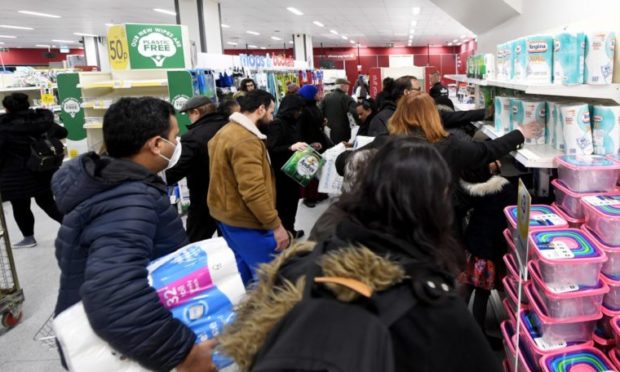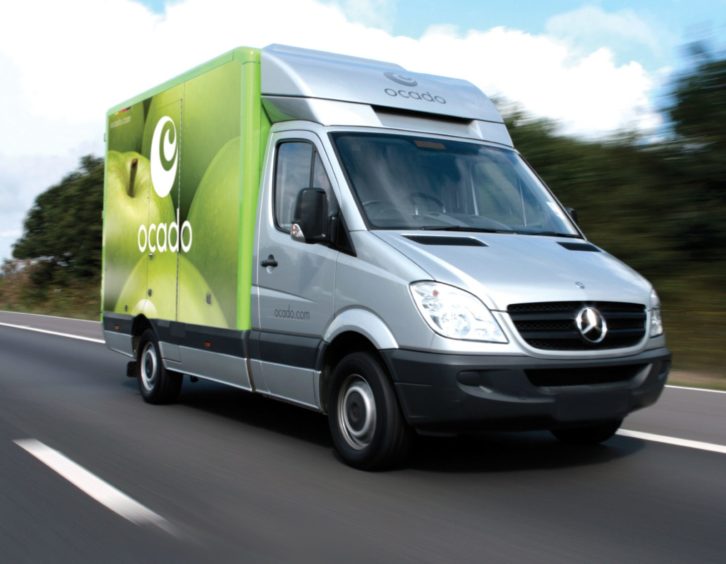With supermarkets already coping with a surge in demand and farm shops and local suppliers around Scotland offering door to door delivery, Clare Johnston argues we’re well covered when it comes to groceries.
Despite the fact mainland Scotland was already living under near-lockdown Level 4 restrictions, it hasn’t stopped the panic buyers from doing their worst.
It seemed almost as soon as Nicola Sturgeon got to her feet in the Scottish Parliament on Monday to announce a legally enforceable stay-at-home order, a significant number of consumers felt the need to stock up.
Images soon appeared on social media of queues outside supermarkets and empty shelves, while Sainsbury’s, Tesco and Ocado’s sites buckled under the strain as customers raced to get their online orders in. With shoppers easily spooked amid both the pandemic and the early days of Brexit, it was perhaps inevitable.
Yet, there’s every reason to be optimistic that this time around our supermarkets and local suppliers are better prepared. Here’s why…
1. Supermarkets are already coping with a surge in demand
December was the biggest month on record for British supermarkets as shoppers spent nearly £12bn stocking up for Christmas.
With many hospitality businesses already closed or facing restrictions on trading hours and the sale of alcohol in the run-up to the festive season, more customers than ever were hosting Christmas at home.
And despite this surge in demand, which came on top of a bumper year for supermarkets amid the ongoing pandemic, and the delays at the Channel just before Christmas as France temporarily closed its borders to UK freight due to the emergence of a new variant Covid strain, still the stores coped.
It was just another sign that buyers have adapted to the new normal, having learned from the earlier stages of the pandemic.
Dear @Tesco,
This message is not helpful over an hour after I've received my delivery with 11 missing items meaning I'm short of food and will have to make an unnecessary journey out, as well as a number of items I'd removed from my basket. pic.twitter.com/cMVZMyfNQj— Chris (@sivraj_sirhc) January 5, 2021
2. Capacity for online ordering and delivery vastly increased in 2020
Last year saw an overall growth of 15.7% in supermarket sales, with online grocery shopping surging by a massive 70.3%, according to research by Barclaycard, as the demand for delivery services increased during the pandemic. So unlike the lockdown of March 2020 when supermarket delivery services were operating at a much lower capacity, they have now dramatically added to their staff and vehicle numbers, meaning there is unlikely to be a longer-term scramble for slots in the way there was in spring.
3. We have plenty of local suppliers
It’s not just the supermarkets who ramped up their capabilities last year. Local businesses, from farm shops to breweries, all adapted in the face of the pandemic in 2020 to offer online delivery and click and collect services.
Last year specialist food and drink stores, which include bakeries and butchers, experienced an overall spending uplift of 28.6%, and they are once again on hand to supply fresh produce to your door.
For more inspiration on where to buy locally, we recently rounded up here just some of the suppliers offering fresh food and veg.
Convenience stores also stepped up last year to offer not only an alternative place to shop for groceries, but other vital services too – as Dr Pete Cheema, chief executive of the Scottish Grocers Federation, outlined here – including click and collect and bill payment services.
And with so many local businesses offering grocery and community services, we can feel confident we won’t have to go without.
4. We can still order takeaways
Feels like an appropriate day to
re-emphasise this #lockdown 😔👇 https://t.co/FIaTu93eOx— James Withers (@scotfoodjames) January 4, 2021
While pubs, restaurants and hotels will all remain closed to sit-in customers during the current lockdown, they are still allowed to operate takeaway services. From cocktail deliveries to your door, to fine dining at home, you can hang up the cooking apron and support local hospitality firms by ordering takeaway or click and collect.
Afternoon teas at home became a big hit last lockdown, with families and friends ordering deliveries and then linking up to enjoy them together via Zoom or FaceTime.
Having already developed these services during the last lockdown, many cafes and restaurants are ready to go, and you can find out how to order via their Facebook pages or websites.
5. Consumers and stores have become accustomed to life under lockdown
In an interview with The Courier last year, retail consultant James Logie explained the psychology behind panic buying – describing some of the worst scenes as “a mass psychosis”. He argued that in seeing stock of certain goods running low on shelves, consumers viewed these items as high value and therefore set about loading up with them.
But having experienced the effects of panic buying last spring, both supermarkets and consumers have adapted. Most of us have learned there is little to be gained by trying to grab items in supermarkets that are in short supply – with the sensible option being to go with alternatives or expand our horizons to source locally.
And the supermarkets have become more adept at predicting potential pressure points, building up stocks of essential items – and nipping panic buying in the bud by limiting the amount of goods customers can place in their trollies.
All things considered, there is no reason for any of us to panic this time around. With food producers and grocery store employees classed as essential workers, shelves will continue to be stocked, leaving us to pick up where we left off last lockdown in trying to perfect that banana bread loaf.

